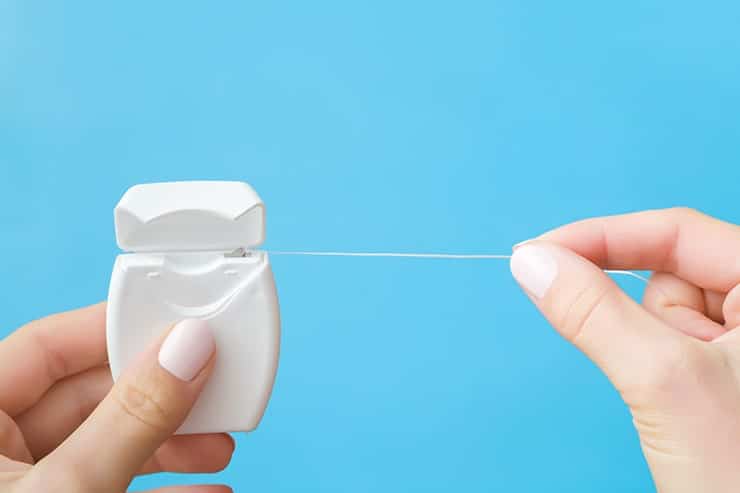Flossing is just as important as brushing. Unlike brushing, you only have to floss once a day. However, flossing still prevents tooth decay by limiting the number of bacteria lodged between your teeth. Additionally, flossing also helps prevent heart disease by relieving your mouth of harmful bacteria.
When you brush, you don’t reach the sides of your teeth and your gums. Flossing reaches those nooks and crannies. Most people think that if you’re flossing, you must be doing it right. However, your flossing habits may be entirely wrong. The following pointers can help you stay in good health.

Flossing Time
When you first start flossing, the process might take you five to ten minutes. Once you get your routine down, you’ll be able to successfully floss in about five minutes. You shouldn’t take any less than five minutes because, otherwise, you won’t hit all the spots. If you rush, you’ll also be less gentle with your gums.
If you floss after brushing, the plaque will spread around your mouth and stick to your teeth until the next brush. Therefore, when you add flossing to your routine, you must floss first! At your next general cleaning, ask us how to floss. Our dentists and dental hygienists will gladly show you the ropes.
Prevent Gum Irritation
If you’re constantly jamming floss into your gum line, you will irritate your gums. To avoid irritation, gently slide the floss up and down the sides of your teeth. This way, you will actually clean your teeth while allowing your gums to relax.
To floss correctly, gently insert the floss between your teeth. Then, slide the floss up the side of one tooth. Repeat on the other side with the next tooth. Continue this process until you have flossed each side of each tooth.
Are You Flossing Too Hard?
If you bleed often when you floss, visit your dentist. The first time you floss after a while of not flossing, you may see a bit of blood. However, if you see blood on multiple occasions, that’s a sign you’re flossing too aggressively.
Bleeding every time you floss could be a sign of other issues such as gum disease. If you are bleeding every time you floss, come see us at My Hills Dentist.
Amount of Floss
Since every tooth requires a clean piece of dental floss, the Australian Dental Association recommends using 45cm of floss each time. If you don’t use a clean section of floss each time, you are basically just redistributing bacteria around your mouth during your floss.
Another thing to keep in mind is that flossing tools prohibit you from having a clean piece of floss for each tooth. If you use a toothpick or flossing tool, you will spread bacteria around your mouth instead of cleaning your teeth.
Ask Us If You’re Flossing Correctly
Next time you come in for your semiannual dental cleanings, ask us if you’re flossing correctly. Schedule an appointment with My Hills Dentist in Baulkham Hills, NSW, by calling us at (02) 9686 7375 or visiting us online.

